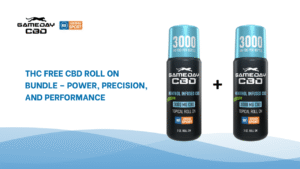Rhinoplasty is a popular cosmetic surgery that reshapes the nose to enhance facial harmony and improve breathing. Whether you choose to undergo this procedure for aesthetic or functional reasons, understanding how to properly recover after surgery is crucial for achieving the best outcomes. Recovering well from Rhinoplasty in Riyadh involves both physical care and patience.
Immediately after surgery, swelling and bruising are expected, but these can be managed with specific strategies. Staying hydrated, avoiding strenuous activities, and keeping the head elevated are vital steps in minimizing discomfort and promoting healing. Additionally, understanding how to protect the delicate nasal tissues and following the surgeon’s post-operative instructions will significantly affect the speed and quality of recovery. By being proactive and mindful, patients can enhance their comfort during this critical phase.
Understanding the Rhinoplasty Recovery Process
Rhinoplasty recovery unfolds over several stages, each with unique characteristics and milestones. The initial week is generally the most challenging as swelling and bruising peak. Most patients wear a nasal splint to support the new shape of the nose and protect it from accidental bumps. During this time, it is advisable to rest and avoid unnecessary movement. The splint is typically removed after 7-10 days, revealing the early results of the surgery. However, even after this period, subtle swelling continues to diminish over weeks or months.
Managing Swelling and Bruising
Swelling can affect not only the nose but also the surrounding facial areas. Cold compresses applied gently during the first 48 hours can help reduce these symptoms. It is important to avoid applying ice directly to the skin to prevent frostbite. Additionally, sleeping with the head elevated above the chest level assists in drainage and lessens puffiness. Patients should avoid lying face down or sideways as this can increase swelling or shift the nasal structure.
Key Activities to Avoid After Rhinoplasty
Certain activities can interfere with healing or compromise surgical results. It is crucial to refrain from heavy lifting, intense exercise, and any activity raising blood pressure for at least a few weeks. These actions can exacerbate swelling or cause bleeding. Patients should also avoid blowing their noses to prevent pressure on the healing tissues. Smoking and alcohol consumption are discouraged as they delay the regeneration process and increase the risk of complications.
Protecting the Nose
During recovery, the nose remains fragile and vulnerable. Protecting it from accidental impacts or sun exposure is essential. Wearing sunglasses should be postponed unless they can be secured without resting on the nose. If sun exposure is unavoidable, applying sunblock and using a hat provide extra protection. Covering the nose while going outside minimizes the risk of irritation, especially in dusty or polluted environments.
Nutrition and Hydration’s Role in Healing
Good nutrition plays a pivotal role in supporting the body’s ability to heal after Rhinoplasty in Riyadh. Patients should focus on a balanced diet rich in vitamins, minerals, and proteins needed for tissue repair. Foods high in antioxidants, such as fruits and vegetables, help reduce inflammation. Staying well-hydrated also aids in maintaining skin elasticity and flushing out toxins, speeding up recovery.
Comparison Table: Rhinoplasty Recovery vs. Other Facial Surgeries
| Aspect | Rhinoplasty Recovery | Facelift Recovery | Eyelid Surgery Recovery |
|---|---|---|---|
| Typical Recovery Time | 4-6 weeks | 2-3 weeks | 1-2 weeks |
| Swelling Duration | Peaks 1st week, long tailoff | Peaks 1st week, subsides fast | Minimal swelling, resolves quick |
| Activity Limitations | Avoid strenuous for weeks | Avoid heavy lifting 2 weeks | Gentle activity allowed early |
| Bruising Intensity | Moderate around nose and eyes | More widespread on face | Minimal |
| Post-op Protection | Nose splint and sun avoidance | Facial bandages | Eye patches or ointments |
Tips for a Smooth Long-Term Recovery
Beyond the initial phase, patients should continue to protect their nose while the tissues fully settle into their new shape. Avoiding trauma to the nose, practicing gentle skincare around the nose area, and following up with the surgeon for check-ups will ensure optimal long-term results. It is normal for final results to appear gradually over six months to a year. Staying patient and mindful of lifestyle adjustments helps preserve the benefits of the surgery.
When to Contact Your Surgeon
If unexpected symptoms occur, such as severe pain, excessive bleeding, fever, or signs of infection, seeking immediate medical attention is necessary. Early intervention can prevent complications and support faster recovery. Regular post-operative check-ins also allow the surgeon to monitor healing progress and address any concerns.
Proper rhinoplasty recovery is foundational for enjoying the aesthetic and functional improvements the surgery offers. By following these vital tips and adopting recommended care routines, patients undergoing Rhinoplasty in Riyadh at Royal Clinic Saudia can maximize their healing potential and satisfaction with the results.







